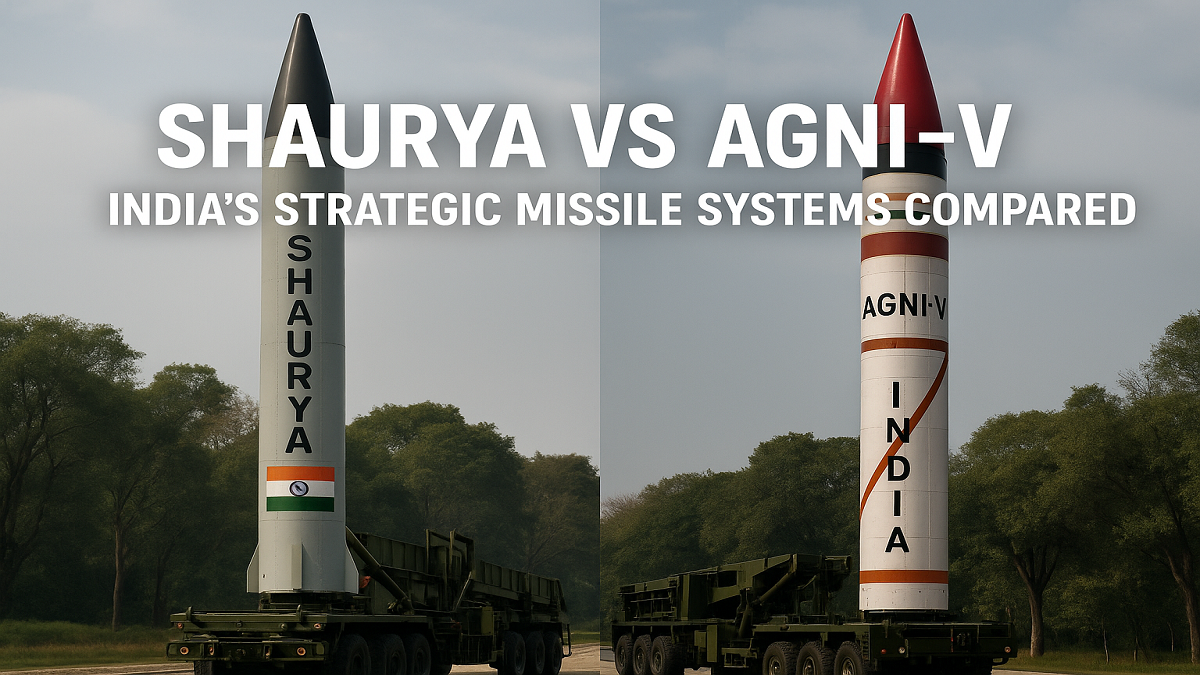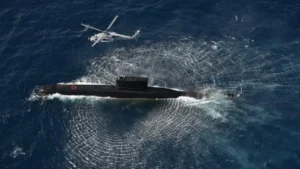India’s missile development program has achieved significant milestones, with indigenous systems enhancing the country’s strategic deterrence. Two such prominent missile systems are Shaurya and Agni-V. Both serve distinct roles in India’s defense architecture, particularly within the nuclear triad and deterrence strategy. Here’s a comprehensive comparison.
Overview
Shaurya Missile
- Type: Surface-to-surface tactical missile
- Range: ~700–1,900 km
- Speed: Hypersonic (Mach 7.5)
- Launch Platform: Canisterized, land-based
- Propulsion: Two-stage solid propellant
- Payload: Nuclear or conventional (up to 1 ton)
- Purpose: Quick-reaction tactical missile for precision strikes
Agni-V Missile
- Type: Intercontinental ballistic missile (ICBM)
- Range: Over 5,000 km (some estimates suggest 8,000+ km)
- Speed: Hypersonic (Mach 24 at re-entry)
- Launch Platform: Canisterized, road-mobile
- Propulsion: Three-stage solid propellant
- Payload: Nuclear (1.5 ton capacity)
- Purpose: Strategic deterrence against long-range adversaries
Key Differences
| Feature | Shaurya | Agni-V |
|---|---|---|
| Role | Tactical nuclear and conventional strike | Strategic nuclear deterrent |
| Range | Medium (up to 1,900 km) | Intercontinental (5,000+ km) |
| Mobility | High, road-mobile and rapid launch | Road-mobile, but strategic use implies limited mobility |
| Accuracy | High (circular error probable < 20-30 meters) | Strategic-grade accuracy |
| Development Focus | Quick deployment, survivability in tactical use | Deep-strike second-strike capability |
| Deployment | Mainly for regional threats | For deterrence against major powers like China |
Strategic Implications
-
Shaurya is valued for its speed, low radar visibility, and versatility in regional conflicts. Its canisterized design ensures quick-launch capability, making it ideal for survivable second-strike scenarios.
-
Agni-V, with its extended range, places almost all of Asia and parts of Europe within India’s strategic reach. It significantly bolsters India’s nuclear deterrence posture, especially in the face of evolving threats from China and beyond.



 India and Brazil Sign Tripartite MoU on ...
India and Brazil Sign Tripartite MoU on ...
 Indian Navy to Commission INAS 335 (Ospr...
Indian Navy to Commission INAS 335 (Ospr...
 Indian Navy to Commission First Indigeno...
Indian Navy to Commission First Indigeno...







